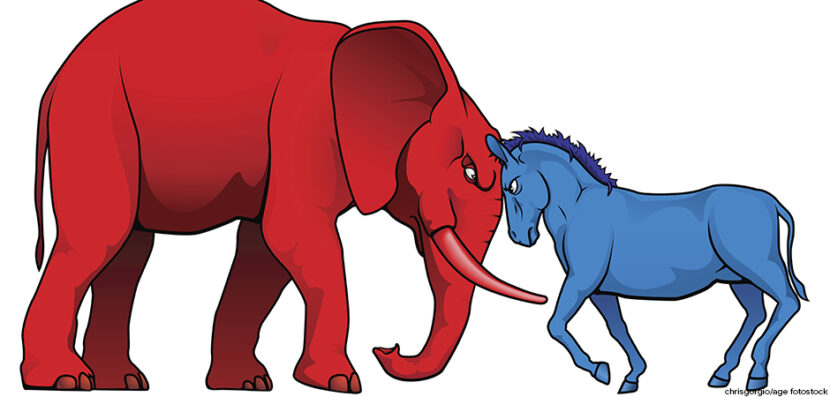- Current Events Nebraska Rejects Winner-Take-All Proposal
- Citizenship Voting Under Age 18
- Citizenship Citizenship in Action
- Democratic Party Biden’s and Trump’s Recent Primary Results
- Elections Trump and Biden Win South Carolina and Michigan Primaries
- Democratic Party Trump and Biden Win Big in Early February Contests

Understanding the First Debate
Did you watch last week’s first presidential debate between candidates Donald Trump and Joe Biden? If so, you may have noticed that it was less a debate about each candidate’s policies, platforms, and ideas for the future. It was more a display of the two candidates arguing with one another. Here, Election Central takes a closer look at last week’s debate performances.
A Brief History of Presidential Debates
In 1960 John Kennedy and Richard Nixon were the first presidential candidates to debate each other on live television. This event had a profound effect on the outcome of the 1960 election, and on the future of elections to come. For the first time, Americans began to pay attention to what a candidate looked and sounded like on a TV screen, rather than to his or her ideas or policy plans. Televised debates began shifting the nation’s attention from the party platform to the individual candidate.
Presidential debates didn’t become a regular thing until 1976, and for many years were run by the League of Women Voters. In 1988, however, the Commission on Presidential Debates (CPD)–a joint nonprofit organization between the Democratic and Republican parties–took over and began enacting requirements for podium height and room temperature, as well as choosing moderators and determining which candidates will be allowed to participate. The CPD rules are also what brought about the end of spontaneity in debates. Unexpected questions and responses are important; otherwise, debates are essentially two candidates delivering scripted speeches. But parties wanted to protect their candidates, so the CPD began requiring predictable questions that candidates could prepare for in advance. The end result was that the American public didn’t learn any more about a candidate than they could have by listening to a rehearsed speech.
So What About Last Week’s Debate?
All that changed last week. Both candidates had an agenda. Trump wanted to energize his base in an effort to improve recent falling poll numbers. One way he chose to accomplish that was by frequently interrupted Biden to prevent the Democrat’s ability to speak about his plans. Biden, meanwhile, faces criticism in the media for being too old and ineffective. Biden tried to respond with energy and spirit. Voters who tuned in learned little about each candidate’s policies or platform.
What Happens Next?
The CPD is discussing possible changes to ensure that future debates run more smoothly. One popular suggestion is muting the microphone of candidates who are interrupting each other (or the moderator).
Biden and Trump are scheduled to debate again in a town hall format (with an audience asking questions) on October 15. Whether the debate will take place is uncertain due to President Trump’s diagnosis with COVID-19. Mike Pence and Kamala Harris will meet each other in the first vice presidential debate of the campaign on October 7.


